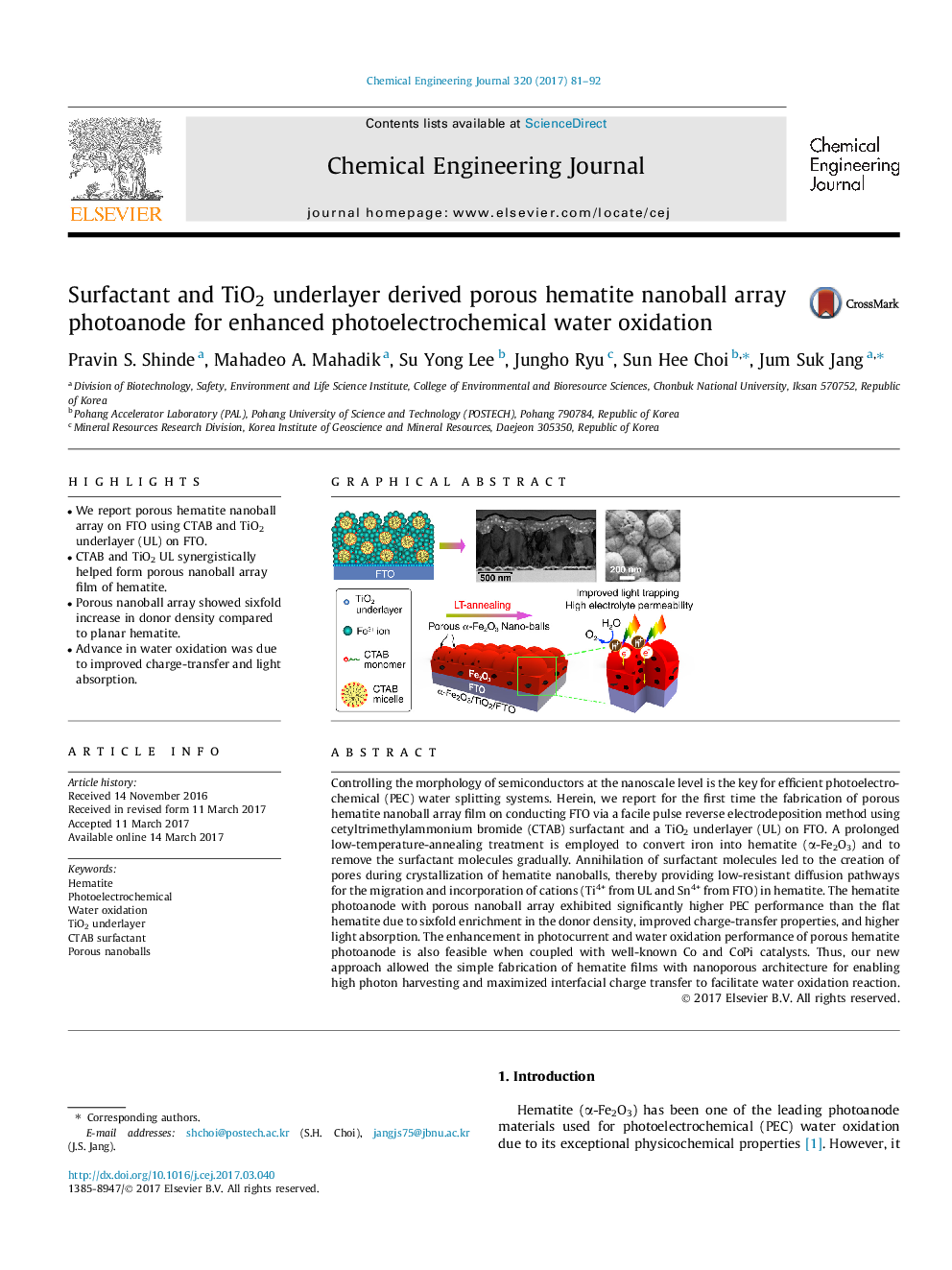| کد مقاله | کد نشریه | سال انتشار | مقاله انگلیسی | نسخه تمام متن |
|---|---|---|---|---|
| 6466011 | 1422958 | 2017 | 12 صفحه PDF | دانلود رایگان |

- We report porous hematite nanoball array on FTO using CTAB and TiO2 underlayer (UL) on FTO.
- CTAB and TiO2 UL synergistically helped form porous nanoball array film of hematite.
- Porous nanoball array showed sixfold increase in donor density compared to planar hematite.
- Advance in water oxidation was due to improved charge-transfer and light absorption.
Controlling the morphology of semiconductors at the nanoscale level is the key for efficient photoelectrochemical (PEC) water splitting systems. Herein, we report for the first time the fabrication of porous hematite nanoball array film on conducting FTO via a facile pulse reverse electrodeposition method using cetyltrimethylammonium bromide (CTAB) surfactant and a TiO2 underlayer (UL) on FTO. A prolonged low-temperature-annealing treatment is employed to convert iron into hematite (α-Fe2O3) and to remove the surfactant molecules gradually. Annihilation of surfactant molecules led to the creation of pores during crystallization of hematite nanoballs, thereby providing low-resistant diffusion pathways for the migration and incorporation of cations (Ti4+ from UL and Sn4+ from FTO) in hematite. The hematite photoanode with porous nanoball array exhibited significantly higher PEC performance than the flat hematite due to sixfold enrichment in the donor density, improved charge-transfer properties, and higher light absorption. The enhancement in photocurrent and water oxidation performance of porous hematite photoanode is also feasible when coupled with well-known Co and CoPi catalysts. Thus, our new approach allowed the simple fabrication of hematite films with nanoporous architecture for enabling high photon harvesting and maximized interfacial charge transfer to facilitate water oxidation reaction.
127
Journal: Chemical Engineering Journal - Volume 320, 15 July 2017, Pages 81-92